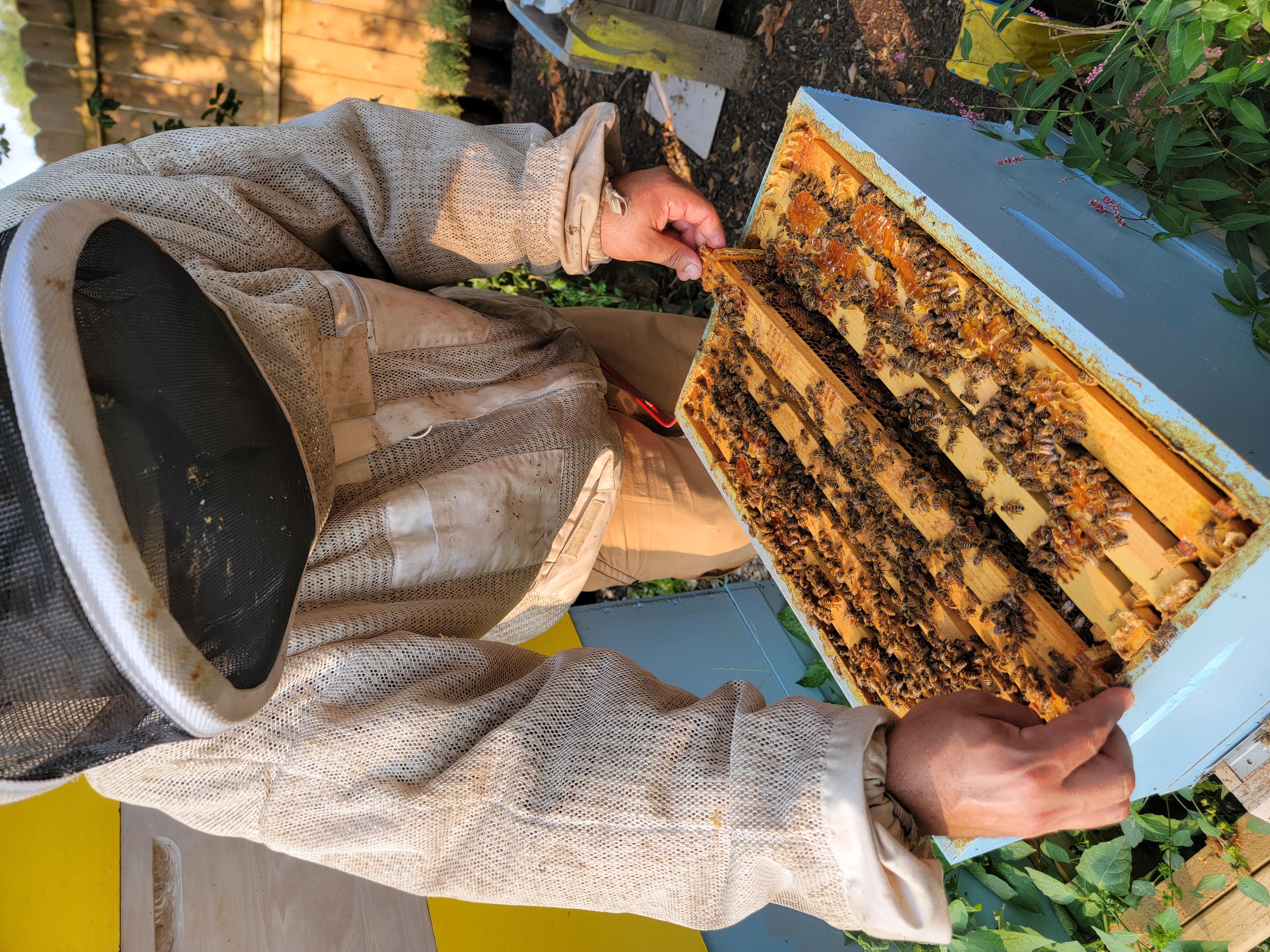
Swazey Goes International--NEPAL!!
- Swazey Farms

- Mar 4, 2023
- 3 min read
When mentioning the nation of Nepal, many instantly conjure images of the snow capped Himalayan Mountains and the infamous Mt. Everest. Few know of its sub-tropical region which is home to a vast agricultural gold mine. Not to mention, its home to a rich supply of unique honey harvested by the most dedicated beekeepers you'll ever meet. In November 2022, the "Swazey Family" boarded a plane and travelled fifteen hours to Kathmandu, Nepal to gain insights and experiences about farming in Asia.
Kathmandu is a sprawling metropolis with little agriculture itself, but it is here, in several major open air markets, where the goods are peddled.
Still, as we wandered the many alleys and side streets of this bustling city center, it wasnt unusual to see families working small backyard plots of fruits and vegetables. We even found a goat and some cows meandering freely and grazing in some vacant lots, trying hard to keep the weeds at bay. It was refreshing to see such an industrialized city still relying on its agrarian roots.
Stepping an hour and fifteen minutes east of the city center, we entered the Nagarkot area in the foothills of the Himalayas. As the sun began to set, we were treated to the wonder of terrace farming on full display. Terracing as a practice was discovered and implemented as early as 700 B.C. in the Hanging Gardens of Babylon. Terracing the land allows for previously unusable space to be developed for farming while simultaneously controlling the flow of water runoff for irrigation.

After a few days of wandering the city and exploring all it had to offer, we boarded a tiny plane bound for the Chitwan province. Here, we checked into our accommodations in Baghmara and prepared for several days in the jungle. We participated in the traditional tourist fare of Nepal including an elephant safari and a canoe trip down the crocodile infested Rapti River.
While visiting the Elephant Breeding Center in Chitwan, we caught our first glimpse of some familiar friends....High in the trees overlooking the elephants were three separate colonies living on the exterior limbs of a tree. The colonies were in close proximity to one another and completely exposed to the elements. This species, Apis dorsata, otherwise known as the "Giant Honey Bee," is the more aggressive species found in Nepal. They are prolific honey producers and are considerably larger than their North American counterpart, Apis malifera.
With our first international bee sighting under our belts, we advanced into the Chitwan commercial district. It didn't take long to happen across the "Eco Bee Product-Honey House." The front of the business was adorned with a traditional Langstroth hive and the back of the shop featured a shimmering wall of honey. We browsed the shop while the owner, Ishwori, attended to other customers. As the sun began setting, the shop emptied out and eventually we were left alone with Ishwori, a local beekeeper, and his teenage son. We explained the Swazey Farms philosophy and began trading stories about our experiences in beekeeping. Ishwari explained further the differences between the species of bees found in Nepal and showed us a "cerana" hive, which is used by beekeepers to house the docile Apis cerana (Asiatic honey bee).
Time slipped away as our new friends shared an evening cup of tea (sweetened with honey, of course). We sampled the varietal honeys which he had in stock and learned what gave each their distinct flavors (lychee, jungle flower, etc.). In the end, we purchased as much honey as our luggage would allow. We thanked Ishwori and his family for their hospitality and vowed to return in the future with more time dedicated to learning the methods of Nepali beekeepers.

It became clear following our visit with Ishwori and his family that this would not be our last trip to Nepal. The tranquility of the environment and the hospitality of it's people make Nepal a must see destination for any open minded travelers. As usual, we learned much more than could be packed in this blog. But the lessons and methods will gradually become a part of the Swazey Farms way of life and will enhance our ability to educate others on the most effective ways to return to a more self-sufficient lifestyle.
Here's a few of our favorite photos from the journey that didn't make the first cut...



































































































Comments